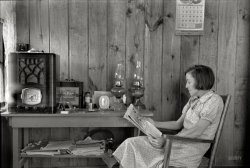
MAY CONTAIN NUTS

Search Shorpy
SHORPY ART

Framed or unframed, desk size to sofa size, printed by us in Arizona and Alabama since 2007. Explore now.
Join and Share
Ad-Free Shorpy
Shorpy is funded by you. Patreon contributors get an ad-free experience.
Learn more.

Recent comments
- +112
- Rear View
- Way in the back --
- Button It Up
- And with an eye on the time ...
- Working in an enclosed ashtray
- Rear View Mirror?
- Tobacco cam
- Basic fact I learned only later in life
- Put a Lid on it!
- Pinstripes in the Tower
- Sound enhancement
- 3438 in '38
- Second Career
- Their days are numbered
- Only the Sensor
- Train control mechanism
- Rarest of the Rare?? & Classy 3400 Class
- Control Mechanism
- Those standpipes
- Wrenches
- International D-40 I believe
- Job prospects
- You had me at Train
- Land of the free
- Broad-Exchange Bldg
- Parking innovation
- The old block
- "Peck turned a sweet propeller"
- National Bank Building
Member Photos
The Shorpy
Printporium
Printporium
Search Shorpy
Search results -- 30 results per page
- Toy Story: 1925
- ... Kurtz still toils. "Week in, week out, from morn till night," smiling as he sits on his low and much worn cobbler's seat, keeping a ... Posted by Dave - 09/14/2011 - 3:45am -
![Toy Story: 1925 Washington, D.C., circa 1925. "The toy shop, 1207 New York Avenue." The former Apolonia Stuntz store (seen earlier on Shorpy here and here) where Abraham Lincoln is said to have bought toys for his son Tad, now the Lee Lung First-Class Laundry ("Bosom 6¢"). A scene so sun-dappled and languid, it's making us ... very ... sleepy. National Photo Company Collection glass negative. View full size.
Camera ShyThe horse may be drowsing, but his groom is very aware of the photographer.
PricesIs that 6 cents a bosom? Perhaps a dime for the pair?
Looks like horseyhas a hairball.
Boot & Shoe RepairingIt's good to see Louis Kurtz is still going strong these 12 years later. His store hasn't changed a bit.
Rooms For RentI wonder how you got to your room when Lee Lung had closed up shop for the day.
Before inflationTo launder a complete shirt: 7 cents for the shirt, 15 cents for the collar, and 3 cents for the cuffs - a total of 25 cents. In 1966, it cost me 25 cents to launder a shirt (with starch) in Carbondale, IL. The collar and cuffs were attached.
Louis Kurtz: Presidential Bootmaker
Washington Post, Sep 23, 1923.
Made Boots for Gen. Grant.
By Byrd Mock.
How many people in Washington know that the shoemaker to President Grant still makes shoes at this little shop at 1209 New York avenue northwest?
Above the door of this battered-looking old shop is the legend, "L. Kurtz, Boot and Shoe Manufacturer," but it takes good eyes to make out the lettering dimmed with age, for the sign has never been changed or renewed since it was first nailed over the door of the cobbler's shop 43 years ago, when he moved from the old shop at 733 Seventh street northwest, where Grant, both as general of the United States army and as President of the United States, personally paid frequent visits to have his boots made and repaired, as well as to order shoes for his entire family.
At the time Gen. Grant gave his first order for pair of boots, L. Kurtz was a young apprentice to his uncle, Louis Kurtz, and it fell to the young man's lot to stitch the tops of the uppers of the general's boots and to fit them to the bottoms, which were made by his more experienced uncle.
Gray haired, horny-handed, wrinkle-skinned, almost at the end of his three score and ten, Louis Kurtz still toils. "Week in, week out, from morn till night," smiling as he sits on his low and much worn cobbler's seat, keeping a sort of jagged rhythm with his hammer strokes with which he punctuates his conversation. …
[Stories of Grant's first visit to the shop, his shoe size, "He wore a 7½ on a wide last," and visits from Grant's children. Other famous patrons: Gen. Sherman, Adm. G.W. Baird, Judge Dent, and President Mckinley.]
(The Gallery, D.C., Horses, Natl Photo)](https://www.shorpy.com/files/images/32146u.thumbnail.jpg)
- The Little Sleep: 1936
- ... I can only imagine some of the dreams this guy had at night.
Jewish Dolls I suppose the dolls were finally dressed in accurate ... Posted by Dave - 03/06/2013 - 4:49pm -
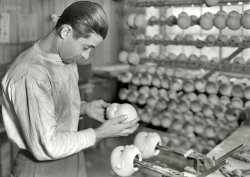
- The Old Song and Dance: 1919
- ... in declining areas and had lost the family or "date night" trade. By the mid-70s, they had moved into the hard core porn then ... Posted by Dave - 08/18/2012 - 5:59pm -

- Arcade Hockey Club: 1926
- ...
A new dish was served on Washington's sports menu last night at the Arcade when teams representing Washington and Baltimore met at ... Posted by Dave - 08/18/2012 - 5:44pm -
![Arcade Hockey Club: 1926 January 22, 1926. Washington, D.C. "Arcade Hockey Club." And if roller hockey isn't your cup of tea, we also have Billiards Dancing Bowling. View full size.
Hard CoreThey look like some pretty tough hombres.
Street hockey ancestorsLet's see: cricket pads, field hockey sticks, a tiny net, and a softball.
Turn those roller skates into rollerblades, and you've got a typical makeshift street hockey game in my neighborhood in the 1990s.
Capital Cityans
Washington Post, Jan 18, 1926
D.C. Hockey Team Defeats Baltimore
A new dish was served on Washington's sports menu last night at the Arcade when teams representing Washington and Baltimore met at roller hockey. The Capital Cityans winning, 3 to 1.
The game is both fast and rough but seemed to appeal to the gathering on hand, made up mostly of skaters. The visitors scored their lone tally shortly after the opening whistle blew when Freeman, running down the sidelines, scored on a chance shot. Before the first period ended Washington tied the score, and its two other goals came in the second. The third was a scoreless one for both teams.
Houston easily starred for Baltimore, while the Whitings were the locals best bets.
The listed Washington players are: Barkley, Morrow, Harrison, W. Whiting, H. (Harry) Whiting, and Ferguson. A roller hockey match consisted of three 15-minute periods.
LocationI wonder if this was taken at the Uline Arena which was located where the Watergate complex is now. Any guesses?
[The Arcade roller hockey club played in the Arcade Building at 14th Street and Park Road. Uline arena (which was nowhere near where the Watergate is) was built in 1940, for ice hockey. - Dave]
(The Gallery, D.C., Natl Photo, Sports)](https://www.shorpy.com/files/images/27423u.thumbnail.jpg)
- How to Stand on Your Head
- ... capri pants/no sleeve blouse outfit in the mall last night. Eventually everything comes around again I suppose. Except, let's ... Posted by tterrace - 06/24/2009 - 5:03pm -
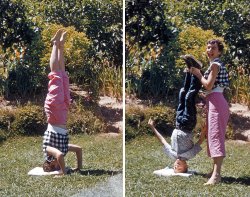
- Partying in Florida: 1975
- ... Florida and my wife Barb and I are set to boogie the night away. I'm looking good in my pressed Jack Nicklaus leisure suit with ... wide belt and bottle of Schlitz in hand. We danced the night away to K.C. and The Sunshine Band and Hot Chocolate.
I still shake ... Posted by Jim McAllister - 12/07/2010 - 8:37am -

- Captured German Plane
- ... This is supposedly a Ju87D from a Nachtschlachtgruppe (Night ground attack group) in Luftflotte 4.
The picture must be from 1945, ... Posted by rkoch - 07/27/2010 - 11:02am -
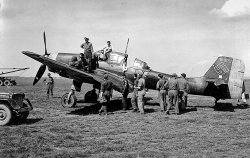
- Smokestack Industry: 1910
- ... yard. Think of what it would be like to do this at night in a snowstorm!
Dr Fletcher, I Presume In the background of this ... Posted by Dave - 07/24/2015 - 10:08am -
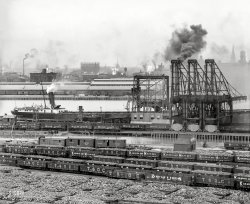
- Pardon My Rack: 1943
- ... labor-intensive. I notice a leaflet for what are probably night classes at the YMCA. It's January, the men are off at was, so it's no ... Posted by Dave - 12/11/2016 - 7:38pm -
![Pardon My Rack: 1943 January 1943. Washington, D.C. "Girl in the doorway of her room at a boarding­house." With photographer Esther Bubley (or sister Enid) front and center. Medium format negative for the Office of War Information. View full size.
WW2 WashingtonSpace was at a premium when soldiers and civilians were living in D.C. then, in very tight quarters. It reminds me of the Joel McCrea movie "The More the Merrier".
P.S.I haven't been here for some time. Nice to be back.
Not a hair out of placeThanks jsm, for posting the link to the BYU master's thesis. I love this series of photos. Despite the disorder of their cramped quarters, both young women in this photo have taken care to make sure their hair is beautifully styled. And those 1940s women's hairstyles were very labor-intensive. I notice a leaflet for what are probably night classes at the YMCA. It's January, the men are off at was, so it's no surprise his photo has a more melancholy aspect than others in this series.
The Girl with the Rackappears to be the same one who mistook her wall lamp (sans shade) for an angel, in an earlier Bubley posting. Also, I couldn't help noticing the earmuffs on the bed lower left. I had those as a kid in the '50's, and that spring frame ALWAYS pinched and pulled out a clump of hair. Ouch.
Original ExitSo Kleenex used to exit through the side of the box, eh?
Dissin’s Guest HouseVriean Diether Taggart, the author of a masters' thesis at BYU titled "Documenting the Dissin’s Guest House: Esther Bubley’s Exploration of Jewish American Identity, 1942-43," identifies the woman in the foreground as the photographer's sister Enid. Sisters Enid, Claire and Esther were in Washington together during the war, and one or both of the sisters have appeared in other photos by Esther during that period, including this one, another here and perhaps this one. The boardinghouse was the former mansion of Charles Mather Ffoulke at 2013 Massachusetts Ave. NW, a space now occupied by the Embassy Row Hotel.
[Note floodlamp reflector on the bed. - Dave]
(The Gallery, D.C., Esther Bubley, WW2)](https://www.shorpy.com/files/images/SHORPY-8d33598a.thumbnail.jpg)
- Cold-Rolled: 1941
- ... here . - Dave]
He loved shadows, dirty snow, night cityscapes, old buildings, locomotives and, mostly, workers and ordinary ... Posted by Dave - 12/22/2018 - 11:14am -
![Cold-Rolled: 1941 January 1941. "Mill district of Pittsburgh, Pennsylvania. Long stairway in a working class section." Acetate negative by Jack Delano. View full size.
It looks like a stairway, but it’s a street Pittsburgh has hundreds of stairways like these, many of them categorized as city streets. They’re one of the things that make the city unique.
Ernie Pyle wrote of the steps of Pittsburgh: “Oh Lord, the steps! I was told they actually had a Department of Steps. That isn’t exactly true, although they do have an Inspector of Steps. But there are nearly 15 miles of city-owned steps, going up mountainsides.“
SlipperyLook at those women further down the hill, linking arms. With the slope and the packed snow, I can imagine the grip underfoot was precarious.
Jack DelanoI really appreciate all the Delano photos you have been posting. Many I have not seen before. We have all seen this one; if it's not his greatest photo it's his greatest landscape.
[This is a "new" photo that we have not seen before, although similar to the one posted earlier here. - Dave]
He loved shadows, dirty snow, night cityscapes, old buildings, locomotives and, mostly, workers and ordinary people in general. He goes past the pathos so abundant in those years and gets to the dignity of workers and poor people. My favorite is of a young black woman wearing her best suit and a tilted white hat while leaning on a rail and waiting for a bus to the next agricultural job. He was born in the Ukraine, grew up in N.Y.C. and spent the last half of his life in Porto Rico, which he loved. He would probably have considered himself a musician (composer) first and a photographer second. His autobiography "Photographic Memories" is worth finding.
Another Fine MessSomehow, I can't help but envision Laurel and Hardy trying to move a piano up this stairway.
Burgh StairsThis brings back memories of out-of-town drivers being confounded by streets suddenly turning to stairs, even though a through street showed on a map.
Taking a ChanceThis is intersection of the short Chance Way, ambling off to the left at the bottom of the wooden stairs and Tullymet Street diving steeply down to Irvine and the Coal/Coke plants, now gone. In a modern view the only feature left are some newer concrete stairs with metal railings and that house in the left foreground, still very recognizable.
(The Gallery, Factories, Jack Delano, Pittsburgh)](https://www.shorpy.com/files/images/SHORPY-8c04611a.thumbnail.jpg)
- The Big Train: 1924
- ... New York Times. Sadly, the Nats lost a heartbreaker last night; for her sake - and the sake of Washington baseball fans of all ages - ... Posted by Dave - 09/09/2011 - 7:55pm -
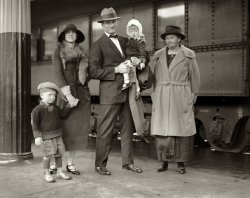
- Atlantic & Pacific: 1907
- ... about nine o'clock and you had yourself a hot summer night.
Now I've Robert Palmer and those girls in my head.
What were ... Posted by Dave - 03/18/2021 - 11:26am -
![Atlantic & Pacific: 1907 Atlantic City, New Jersey, circa 1907. "St. Nicholas Church, Pacific and Tennessee Avenues." 8x10 inch dry plate glass negative, Detroit Publishing Company. View full size.
Reprobates?Based on my own misspent youth, it appears those boys to the left of the church are up to no good.
Not on my Monopoly boardHaving visited Atlantic City but once, it is difficult for me to think of it as a normal town with churches and grocery stores and such. I don’t remember Boardwalk Empire as being heavily populated by the “normal” either!
Now if the spires displayed gold letters spelling
T
R
U
M
P ....
Fresh GroundIt would be holy [sic] appropriate, then, if the post-service convivium featured refreshment made possible by a classic A&P Eight O'Clock coffee grinder (the sort of which was omnipresent in grocery stores of the not-so-distant past).
Ground for this church was broken not so very long before this image was captured, as construction was completed in 1905. And it still stands! (I was prepared to discover this would be yet another church to face the wrecking ball.)
Quite the tangle Power line work by the local electric company has left the top of this utility pole looking like the aftermath of an explosion in a spaghetti factory.
The carbon arc light suspended above the street brings back memories of the old movie projectors. For a couple of summers during my adolescence I was friends with the projectionist at one of the local drive-in theaters. I would go to work with him different nights and learned to operate the projectors. One of the neat things was watching for the little circle of light to flash on the bottom right of the screen to signal when to start the second projector. When the circle flashed again you opened the shutter on the second projector and shut off the first projector. If done correctly it was seamless. I don't remember exactly long each reel of film lasted but there were a lot changes in a two hour movie. Add that to the standard double feature starting about nine o'clock and you had yourself a hot summer night.
Now I've Robert Palmer and those girls in my head.
What were they looking at?The St. Nicholas of Tolentine Catholic Church, circa 1907, is a beautiful church. But I wonder what parish it serves? Today it's surrounded by mostly low price hotels and parking lots.
This picture captures some great moments. At left is a group of boys, circled around something, all staring down intently. No doubt it was something only boys would find fascinating. While around the corner are the girls, grouped at the top of the steps. You can almost hear the giggling. I also like the man up against the wall, with his thumbs in his vest, posing for the photographer.
Then and NowLooking at the magnificent structure in 1907, one is aware of its huge size, and with the spartan number of people around makes it seem even more huge and out of sync with reality. Skip forward to 2021 and it seems not many more people are around than 114 years before.
In reply to Rob EllieCarbon rods, positive and negative or sometimes two negatives, were used in projection world wide up until around the 1960s when xenon filled high pressure glass bulbs were introduced. Both consumed large amperage but at low voltages, based on the size of the rectifiers supplying the DC current, the size of the screen, and the size of the carbon rods and xenon lamps, ranging anywhere from 5mm to 30mm diameter or more for the carbon rods to 1000 watts to 15000 watts for xenons, depending on whether the screen was small or huge such as Imax. The latest technology is laser powered light sources in some locations. The xenon lamps are used for both film (now rare) and digital projection.
Carbon arcs were also the norm for film studio lighting, in combination with sealed lamps. Carbon arc light was very intense, needed especially for early slow speed film stock. It was also the closest natural color temperature to daylight.
Film spools were usually around 1000 feet in the era of flammable nitrate film and then when safety film was developed around the early 1950s, 2000 feet became the industry norm for shipping and most projection, until larger spools, example 6000 feet started being used in some cinemas in the 1960s, leading to the entire film (35mm or 70mm) being held on horizontal 'platters' introduced around the early 1980s, all systems that were joined up by the projectionist from the delivered 2000 foot spool. A 2000 foot spool ran for about 20 minutes when full.
(The Gallery, Atlantic City, DPC)](https://www.shorpy.com/files/images/SHORPY-4a22490a.thumbnail.jpg)
- Fender Bender: 1933
- ... be 1st and H I looked at Google Maps. Looks like it night be First and H Street.
A lead, if not an answer The street sign to ... Posted by Dave - 05/14/2015 - 9:00am -
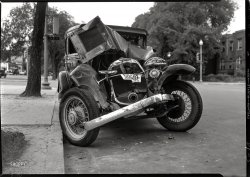
- The Olbiston: 1906
- ... No way one might have to apologize to the neighbor late at night for having (mis)taken the wrong driveway.
Where the 'Goyles Are ... Posted by Dave - 05/25/2020 - 6:33pm -
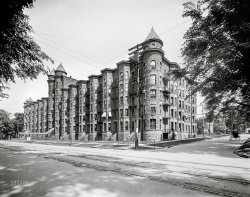
- Double Jeopardy: 1940
- ... place newspaper on the floor on his side of the bed at night because he would wake up and start hacking out some very bad black stuff. ... Posted by Dave - 11/18/2018 - 4:03pm -
![Double Jeopardy: 1940 August 1940. "Miner at Dougherty's mine, near Falls Creek, Pennsylvania." Medium format acetate negative by Jack Delano. View full size.
What IsCoal Dust and Cigarette Smoke, Alex.
Sixteen TonsIf you see me comin', better step aside
A lotta men didn't, a lotta men died
One fist of iron, the other of steel
If the right one don't a-get you, then the left one will!
My Grandfatherworked in the coal mines in the Lehigh Valley and contracted the black lung disease. My grandmother told me when I was about 8 that she would place newspaper on the floor on his side of the bed at night because he would wake up and start hacking out some very bad black stuff. In the morning she would wrap up the newspaper and put it out in the trash. She did this for about ten years until he died just before WWII began. When he quit the mines he found a job as a train conductor on on the Lehigh Valley railroad and I wound up with his Hamilton pocket watch that he used as part of his job.
I'm originally from the patch. Very close to Mauch Chunk, now known as Jim Thorpe. This poor guy is probably about 17 years old.
Black LungBig Coal: "It's the cigarettes!"
Big Tobacco: "No, it's the coal dust!"
Tale of belt holesFrom the way the holes in his belt are worn it looks like he gained a bit of weight (the hole to the right of the one currently in use is stretched), then he lost a good bit (he had to punch a hole to make the belt even smaller than the last hole allowed), and now he's moved up to the last machine-punched hole again.
Troubles Come in ThreesIt is bad enough that he is exposed to coal dust in his work and that he could get lung cancer from the cigarettes but that tumor on his right eye needs to be looked at also. Poor guy probably couldn't afford to get medical attention.
[Or he smacked his head into something or someone. I had an egg just like that caused by head-to-pavement contact. - Dave]
(The Gallery, Jack Delano, Mining)](https://www.shorpy.com/files/images/SHORPY-8c03091a.thumbnail.jpg)
- Letterbox: 1912
- ... Hmmm, I hadn't considered rain, sleet and gloom of night. Never mind.
First Street, NW? Could this picture have been taken ... Posted by Dave - 04/06/2013 - 11:56am -
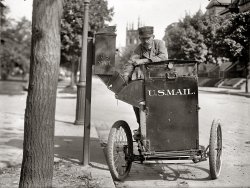
- Thompson Branch: 1920
- ... Washington, caught fire on the 1st and W. L. Hurxthal, the night prescription clerk had a narrow escape from death”
Drug store ... Posted by Dave - 08/29/2016 - 12:10pm -
![Thompson Branch: 1920 Washington, D.C., circa 1920. "People's Drug Store, 15th Street & New York Avenue N.W." National Photo Company glass negative. View full size.
Long time tenantW. S. Thompson has been there awhile.
There's a newspaper reference from the Evening Star, July 29, 1863:
"Important Local Mail Arrangements. The Postmaster General has selected the following places for station letter boxes for the convenience of our citizens. All letters dropped in these boxes, either for transmission by mail or local delivery, will be called for by the letter carriers for each district."
"Third District -- White, P., grocery,Thirteenth and P street: Kidwell A; Lawrence, druggest, between Thirteenth and Fourteenth streets; Thompson, W. S., druggist, New York avenue and Fifteenth street; Ford, Dr., druggist. Eleventh street and Pa. avenue; Dayton's bakery, ? 45ft Eleventh street, between G and H."
Also an ad from The National Republican, October 22, 1867:
Of Human BondageThe Bond Building is on the opposite corner of this city square at 14th & New York Ave. (SW corner). Liggett's is housed in the Home Life Building, which had its main entrance on G St.
Single Pane Vertical Jalousie?No clue what you would call those interesting 19th century windows that open vertically on a center pivot.
This arrangement would work very well for cleaning the glass.
But in hot and humid Washington DC summers, you could not have screens, to keep out insects, when you opened them. The building on the left does. Would you name that window style mosquito invitational?
[They're casement windows. - Dave]
Re: Single pane vertical jalousie?I've heard architects call these pivot windows. They can be horizontal or vertical. Casement windows open on hinges, like doors.
The kitchen at my elementary school had horizontal pivot windows, with half-cylindrical screens on the outside. A bit awkward to make, but you could adjust the windows to catch a breeze or keep rain out.
Not so many mosquitoes on the third floor, but I'd worry about pigeons.
Fire in 1899From the American Druggist and Pharmaceutical Record: Nov. 1899 “The pharmacy of W. S Thompson, at 703 Fifteenth Street, NW Washington, caught fire on the 1st and W. L. Hurxthal, the night prescription clerk had a narrow escape from death”
Drug store competitors.These buildings are along 15th Street Northwest in Washington just up and opposite the Treasury Building; New York Avenue is out of sight just to the left, next to the George Washington Hotel which wrapped around the corner of the two streets. W. S. Thompson, who built the building at center where People's is, was a major druggist in DC by the 1850s. Liggett's Drug Store at right is on the ground floor of the Bond Building. G Street is at far right. All of these buildings were razed to build The Washington Building.
Car IDHupmobile
(The Gallery, D.C., Natl Photo, PDS)](https://www.shorpy.com/files/images/SHORPY-29967u.thumbnail.jpg)
- Cow Town: 1943
- ... train passed through town every 20 minutes all day and night long. It's a busy railroad town. It's also a busy feedlot town with all ... Posted by Dave - 09/05/2012 - 6:07pm -
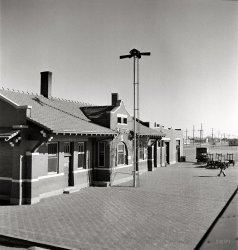
- Freeway to Another World: 1965
- ... science-fiction planetary paintings, or else the Night on Bald Mountain section of Fantasia . It's July 1965, on a ... Posted by tterrace - 09/21/2011 - 9:17pm -
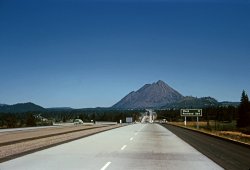
- Spensley Orpheum: 1940
- ... of his arrival, and April 18, 1940 ("Dearest Frau"), the night before his departure. But his taste in movies was generally above the ... Posted by Dave - 04/17/2020 - 3:10pm -
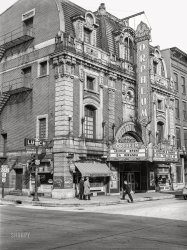
- Vivian Slippers: 1957
- ... VW Bug in San Francisco's North Beach theater district one night. We found a space with less than 2 feet of clearance, so we got out, ... Posted by Dave - 06/12/2017 - 9:08am -
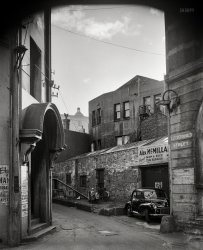
- Turkey Special: 1922
- ... with the turkey. It was loaded on the truck last Sunday night and the trip began. Thirty-seven hours and thirty-four minutes later the ... Posted by Dave - 11/21/2012 - 10:51am -
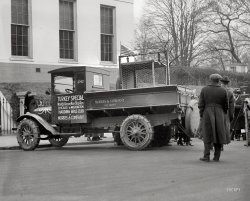
- Get Happy: 1925
- ... and play with his band, the Golden Pheasants, every week night from 8:30 to 11:30. He features "requests," and for the asking will play ... Posted by Dave - 09/30/2011 - 8:49pm -
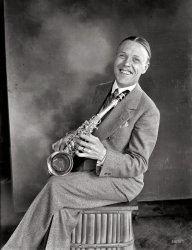
- The Dinette: 1941
- ... theatre, stores and bunk houses. Tent and trailer camps. Night scenes. Boomtown activities. Men filling in application for employment ... Posted by Dave - 02/04/2019 - 11:36pm -
![The Dinette: 1941 May 1941. "Main street of Childersburg, Alabama." And a close-up of the restaurant glimpsed earlier from above. Medium format acetate negative by Jack Delano for the Farm Security Administration. View full size.
Dinette DelightsI bet I could get a great slice of lemon icebox pie and a sweet tea at the Dinette.
Why So Much Construction?The Delano pictures of Childersburg show a lot of new buildings going up in the main business district of time. The 30s-early 40s was not a time of heavy building in old southern downtowns, unless there is a military base nearby. So I took a look.
A January 1939 tornado had taken a 100 yard swath out of Childersburg's business district.
[The construction had to do with a new Dupont munitions factory. Jack Delano was in Childersburg to document the "boomtown activities" surrounding the construction of the nearby Alabama Army Ammunition Plant: "Photographs show main street. Construction of the town's first motion picture theatre, stores and bunk houses. Tent and trailer camps. Night scenes. Boomtown activities. Men filling in application for employment forms for Dupont Powder Plant. Dairy barn converted into three story bunk house for powder plant workers." - Dave]
Cream and sugarEver since childhood, there haven't been too many two-word combinations that thrill me as much as "coffee shop" ... written or spoken, or even merely thought of, the words bring a tingle. Magical, the delicious aromas and scenes of comfort conjured by those words.
From the same spot today.It is not obvious from the picture but if you move street-view around the corner and look down the block, you'll see the same 2 story building as see in the "Local traffic: 1941" image that shows this corner.
Can anyone tell mehow could those weight machines make enough pennies to even pay for their construction?
["Weight machines"! - Dave]
Dinette for someIn Alabama in 1941, how welcoming the coffee shop was depended a lot on what you looked like.
Do You Weigh What You Should?The penny scale is a 1921 Mills Lollipop Scale, manufactured by the Mills Novelty Co. Chicago, Ill.
(The Gallery, Eateries & Bars, Jack Delano, Small Towns)](https://www.shorpy.com/files/images/SHORPY-8c05756a.thumbnail.jpg)
- Han Wah Laundry: 1901
- ... northwest, failed to secure the door properly Wednesday night when he retired, and some one entered, carrying off the celestial's ... Posted by Dave - 10/08/2020 - 2:15pm -
![Han Wah Laundry: 1901 Washington, D.C., circa 1901. "View of Sixth Street N.W., west side, looking north from I Street." 5x7 inch glass negative, D.C. Street Survey Collection. View full size.
Tree wrapit looks like the trees are wrapped in chain link fencing.
Can anyone explain?
[Curbed horses tend to nibble. - Dave]
News ItemThe Washington Post -- Aug. 14, 1903
Han Wah Moy's Clothes Gone
Han Wah Moy, who conducts a laundry at 900 Sixth street northwest, failed to secure the door properly Wednesday night when he retired, and some one entered, carrying off the celestial's garments and a $5 bill which was in one of his pockets. Moy discovered the loss yesterday morning and, coming to police headquarters in borrowed clothes, reported the theft.
Still Going Strong!!This may be the first time that the D.C. Street Survey buildings shown are still here.
Re: News ItemFor a moment I thought stanton_square was back. (Note to new Shorpsters: this informative commenter, not seen for a few years now, provided relevant news items contemporaneous with the posted photo, in a distinctive format very similar to Dave’s comment.) I wonder where he / she got to.
Future shockThere are signs and portents here of the Han Wah Laundry's future: a disembodied foot and the faint ghostly images of passers-by; the blurred image of the woman hurrying away with a baby buggy; the abandoned bicycle; the shadow pattern on the pavement that calls to mind a devilish face. A century later the quieter pace of a quieter age is gone.
Bike & Camera CaseIs that our photographer's bike and camera case in the lower right corner of the image? I would suspect a tripod was also involved unless the camera was supported by some physical object like a wall etc.
[The case is for the photographer's glass negatives. - Dave]
(The Gallery, Bicycles, D.C., D.C. Street Survey, Stores & Markets)](https://www.shorpy.com/files/images/SHORPY-40305a.thumbnail.jpg)
- Major Riddle: 1864
- ... I do not know if she knew her sweetheart's last night on Earth was there, or even that he had been there.
When Reynolds ... Posted by Dave - 08/01/2012 - 3:13pm -
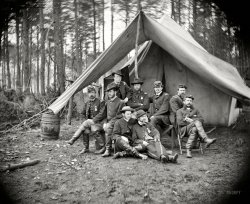
- Totally Tubular: 1960
- ... is just about my favorite place in the world. Just last night I uploaded a ton of wedding photos onto my Facebook page, and was lost in ... Posted by tterrace - 11/27/2017 - 1:29pm -
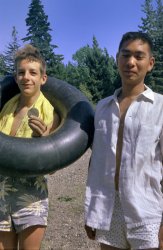
- Celebration Illumination: 1909
- ... years makes Then they were trying to create daylight at night, and now we're trying to conserve energy and turn down/off lights at night. I wonder what the Kw/h usage was.
Joe from LI, NY
(The ... Posted by Dave - 09/12/2011 - 5:04pm -
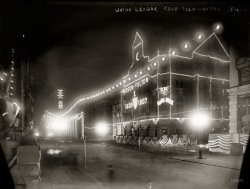
- Harris & Ewing: 1924
- ... was in the store until about 10:30 o'clock Saturday night. He placed diamonds and the receipts for two days' business in the safe, ... of a large quantity of cyanide poisoning.
Police last night advanced the theory that Dr. Berman swallowed the poison the moment after ... Posted by Dave - 08/28/2012 - 12:09pm -
![Harris & Ewing: 1924 Washington, D.C., circa 1924. "Harris & Ewing. Exterior, new studio." The new offices of "America's studio beautiful" opened in November 1924 at the same F Street address as the previous building (whose ground-floor tenant, Lucio's jewelry store, was the scene of a robbery/arson/suicide-by-cyanide shortly before the building was remodeled). The basement storage vault was said to have held a million glass negatives, the bulk of which were donated to the Library of Congress in 1955. Harris & Ewing Collection glass negative. View full size.
True CrimeWashington Post, May 26, 1924.
OPTICIAN DIES WHEN HELD
AS HE LEAVES BURNING GEM SHOP
Police Say Berman Had No Right in Store;
Suspect Robbery Aim
EXPLOSION CALLS POLICE TO SCENE
Doctor Discerned Walking About in
Flames and Smoke; Had Office There.
Dr. Lewis Berman, 36 years old, an optician, fell dead when placed under arrest early yesterday, a moment after he escaped from an explosion and fire which wrecked Lucio's jewelry store at 1313 F street NW.
Policemen Davis and Helms, of the First precinct, were standing at Fourteenth and F streets, about five minutes after 3 when an explosion occurred and the plate glass window of the jewelry store was shattered.
When they reached the store they found its exterior filled with flame and smoke through which they saw a man running back and forth. Davis called upon him to come out, but he was seen falling to the floor and crawling under a showcase. The policeman then brandished his revolver and threatened to fire, hoping to frighten the man into coming out.
Firemen Smash in Door.
A few moments later firemen smashed in the door with axes, and Dr. Berman ran out. As Policeman Davis arrested him, Dr. Berman told the officer, "I had a right to be in there." He repeated this several times, it is said, and then collapsed. When taken to Emergency hospital, he was pronounced dead.
Dr. Berman until Wednesday, it is said, had offices in the rear of the jewelry store. On that day he had sold out his interest to Mrs. Margaret Perkinson, who conducted the jewelry business.
Earl Perkinson, husband of the proprietor, was in the store until about 10:30 o'clock Saturday night. He placed diamonds and the receipts for two days' business in the safe, locked the store and left it.
Dr. Berman, according to police, occasionally went into the store, through courtesy, and had left there about 7 o'clock. Later in the evening he registered at a Turkish bath, but did not occupy his room there, police say. The next event was the explosion.
Police declare in their belief that an attempt was made to rob the store and a fire started to "cover up" the robbery. A duplicate key was found in Berman's pockets. He had no right to the key, police say.
Wife Can't Believe It.
When Mrs. Berman was informed of her husband's death by Mrs. Perkinson, she cried out, "Oh, I can't believe it, I can't believe it."
At the hospital she said that her husband probably, in passing the store, had seen burglars there and had entered to rout them.
Mrs. Berman has a daughter seven years old. The Berman residence is at the Home apartments, Seventh and K streets northwest.
An inquest will be held at 1:30 o'clock this afternoon to determine the cause of Dr. Berman's death. His clothing had not been burned, and it is thought he died from inhaling smoke and flames.
Washington Post, May 27, 1924.
BERMAN A SUICIDE, JURY ASSERTS;
GEM STORE SET ON FIRE
Optician Took Large Dose of Cyanide
Of Potassium, Chemist Finds.
PACKAGE OF JEWELRY MOVED NEAR DOOR
Wife Holds He Entered Shop to Get
Eyeglasses Left There for Repair.
A large dose of cyanide of potassium, self administered, caused the death of Dr. Lewis Berman, 36-year-old optician, who expired Sunday morning a moment after he had dashed out of the flame and smoke that enveloped Lucio's jewelry store, 1313 F street northwest.
This was the verdict yesterday of a coroner's jury which brought out these additional declarations:
The fire in Lucio's store was as was of incendiary origin.
Dr. Berman, who until Wednesday had rented space in the store, had no right in the store at that time of the morning, nor had he been authorized to have the key found in a pocket of his clothes.
The coroner's jury based its verdict of suicide on the testimony of Dr. S.C. Moton, assistant District chemist, who told of having found evidence is in the dead man's stomach of a large quantity of cyanide poisoning.
Police last night advanced the theory that Dr. Berman swallowed the poison the moment after he saw Policeman Davis at the door. It was pointed out that cyanide is a quick acting poison, and in view of the quantity taken, Berman could not have taken it much sooner.
None of the jewelry or other stock in the store was touched, so far as is known. A leather case left at the store by a Baltimore man, however, had been moved from a place behind the safe to a counter near the door. When it was placed behind the safe it was unwrapped. When found after the fire it was inclosed in newspapers and tied with heavy twine. The case contained watches and other jewelry.
Mrs. Berman, widow of the optician, at the inquest said: "I believe he wanted to get a pair of glasses which had been left for repairs by Abe Friedenberg."
Mr. Friedenberg, who lives at 3517 Fourteenth street northwest, concurred in this belief. He said that he had asked Dr. Berman to turn the glasses over to him before Sunday so that he would have them to read the Sunday newspapers.
Following the inquest yesterday, Dr. Berman's body was sent to Baltimore for burial.
America's Studio Beautiful
+86Below is the identical view taken in April of 2010. However, the occupant now deals in food instead of film.
Used to work in the buildingI worked in the building for 3 years. The 2nd - 4th floor of both buildings are now office space. When the previous tenant moved into 1313 F in the later 90s, they found a bunch of old negatives that belonged to Harris & Ewing.
[And did what with them?? - Dave]
(The Gallery, D.C., Harris + Ewing, Stores & Markets)](https://www.shorpy.com/files/images/17203a.thumbnail.jpg)
- Progressive Farmer: 1939
- ... one much anticipated program (Grand Ol' Opry, one Saturday night, if I recall correctly).
By the time I came along, Mom's family had ... Posted by Dave - 06/24/2012 - 9:50pm -
